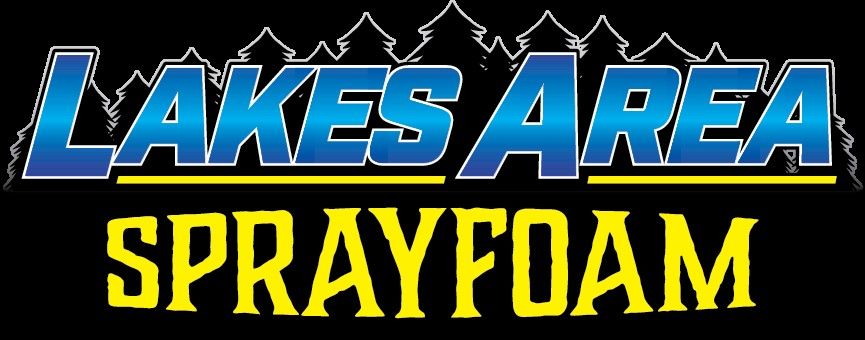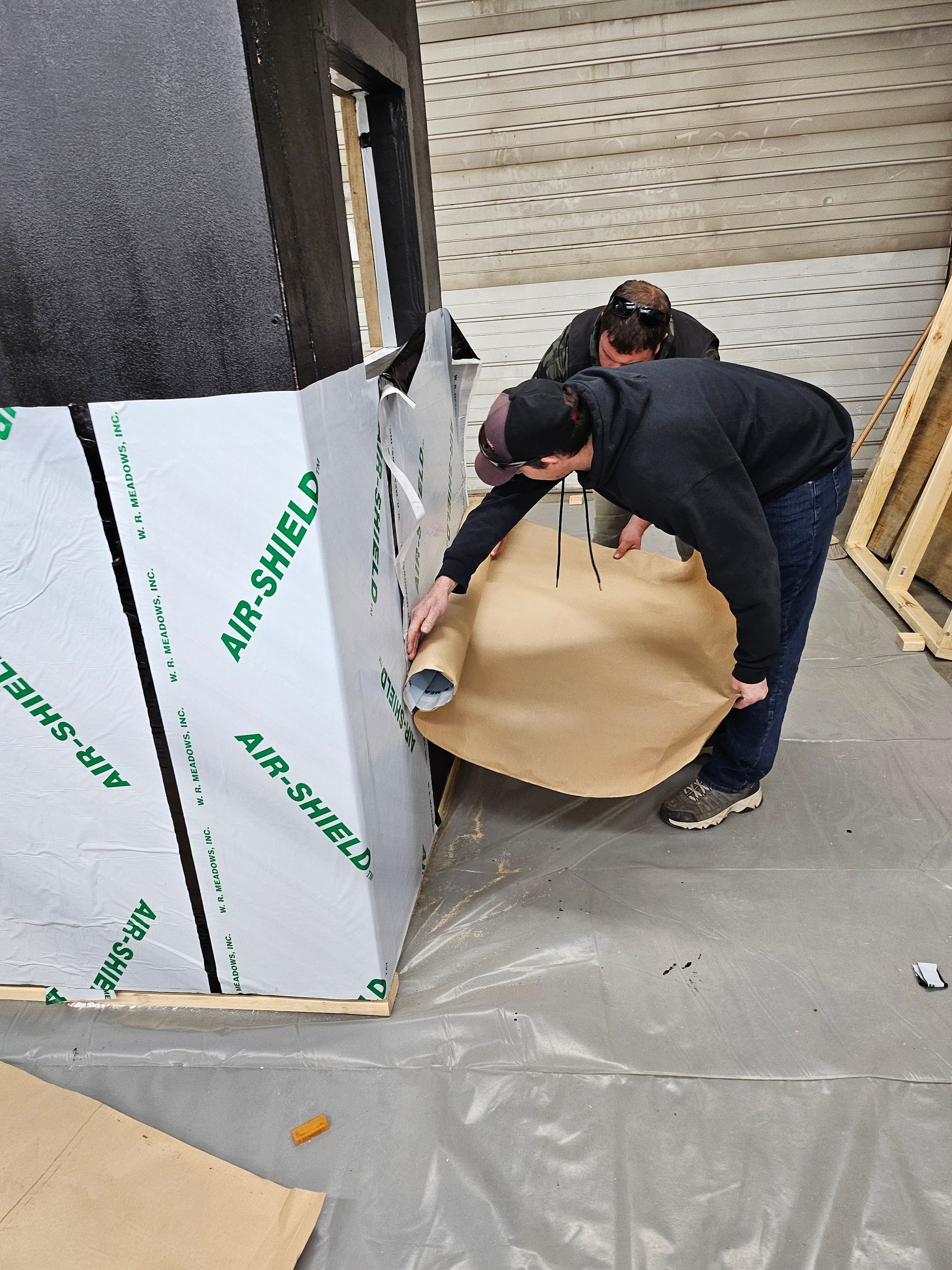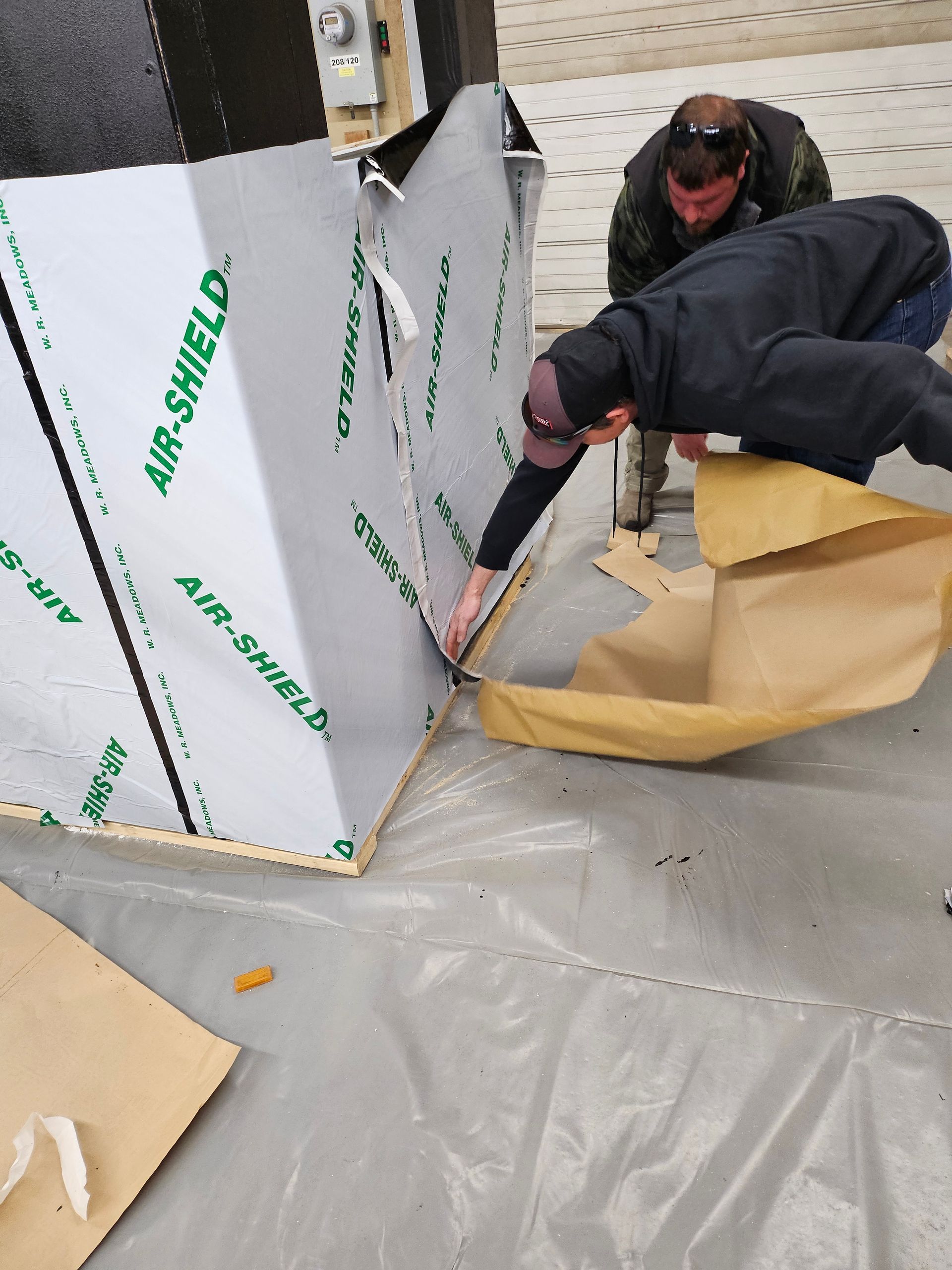RIGID/SEMI-RIGID INSULATION
Rigid foam or foam board is a type of continuous insulation most commonly applied to the building’s exterior wall, roof, and foundation. Rigid foam has a closed-cell structure that does not allow air to pass through it.
Rigid insulation is a type of building material used in construction to create a thermal barrier between the interior and exterior of a building. It helps regulate temperature and improve energy efficiency. Here are some key points about rigid insulation:
Material Types:
- Rigid insulation comes in various materials, including extruded polystyrene (XPS), expanded polystyrene (EPS), and polyisocyanurate (polyiso).
- These materials have closed-cell structures, preventing air from passing through.
Applications
Rigid insulation is commonly used for:
- Exterior walls: Attached to the outside of the framing, it reduces thermal losses through thermal bridging.
- Roofs: Provides insulation between the roof structure and the interior.
- Foundations:
Insulates below-grade areas to prevent heat loss.
Benefits
- High R-values: Rigid insulation offers excellent thermal resistance.
- Strength: It provides structural support and durability.
Moisture Resistance:
Closed-cell structure makes it highly moisture-resistant.
Semi-Rigid insulation
offers several benefits when used in construction and building applications:
Thermal Insulation: Semi-rigid insulation helps regulate indoor temperatures by reducing heat transfer through walls, ceilings, and floors. It minimizes heat loss during cold weather and heat gain during hot weather.
Acoustic Insulation: Besides thermal benefits, semi-rigid insulation also dampens sound transmission. It can improve the acoustics within a building by reducing noise from adjacent rooms or external sources.
Fire Resistance: Many semi-rigid insulation materials are fire-resistant. They can slow down the spread of flames and provide additional safety in case of a fire.
Moisture Resistance: Semi-rigid insulation materials are less prone to absorbing moisture compared to some other types of insulation. This helps prevent mold growth and maintains the material’s effectiveness
Easy Installation: Semi-rigid insulation boards are relatively easy to handle and install. They can be cut to fit irregular spaces and are suitable for both new construction and retrofitting existing buildings.
Durability: These insulation boards are sturdy and durable. They can withstand mechanical stress, making them suitable for areas with potential impact or vibration.
Energy Efficiency: By improving thermal performance, semi-rigid insulation contributes to energy savings. Reduced energy consumption leads to lower utility bills and a smaller environmental footprint.
Remember that the specific benefits may vary based on the type of semi-rigid insulation material used and the application context. Always consult with a professional to choose the right insulation solution for your specific needs.
Location
Lake Area Spray Foam
29240 Patriot Ave S, Suite A
Pequot Lakes, MN, 56472
Contact Us
(218) 866-2100
lakesareasprayfoam@gmail.com
All Rights Reserved | Lake Area Spray Foam



